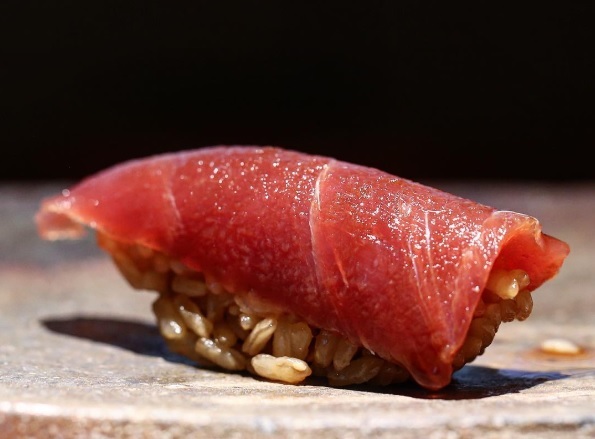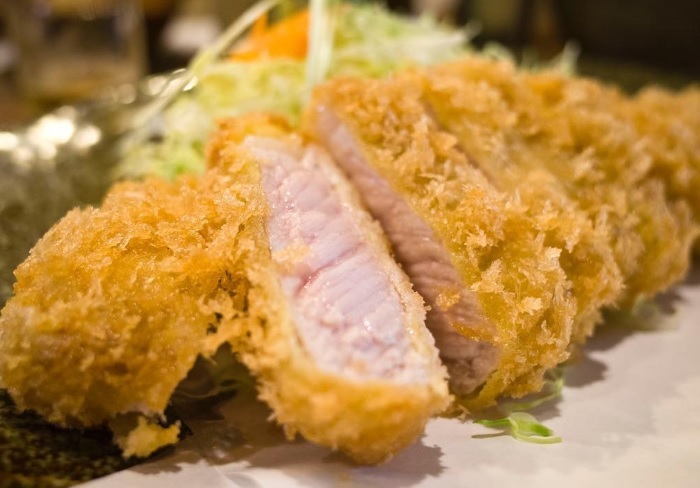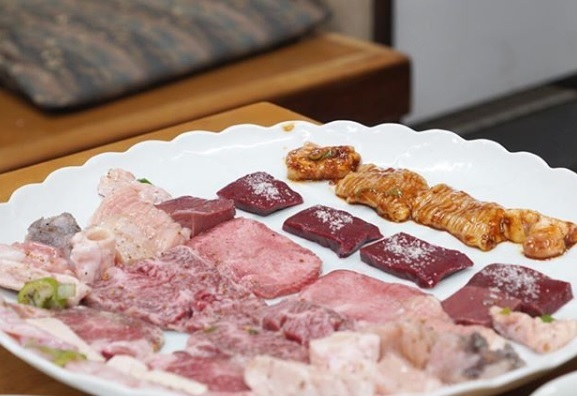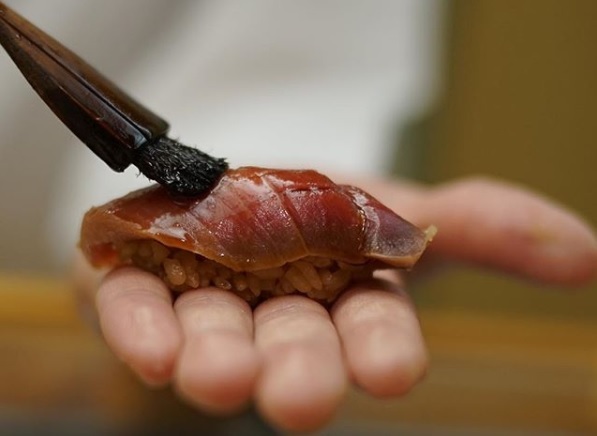The Most Expensive Restaurant in Kyoto –Shunseki Suzue
A while ago, I introduced my 13 ultimate kappo/kaiseki restaurants, featuring my personal favorites among kyoryori restaurants in Kyoto with regard to price points/difficulty in reservation. I had one condition for all the restaurants: booking must be possible; although booking the most difficult one might be the most challenging, it should still be possible.
One might wonder how I could miss Suzue near Higashiyama Station. The reason is that Suzue is one of the most expensive dining experiences in Kyoto, if not the most expensive. The bill can easily be more than 50,000 yens++ without drinks or even higher in the Matsutake or crab season. Many people might not wish to part with that amount of money just for one meal when it’s possible to have an enjoyable meal for around 1,000 yens in Japan.
Let me reflect on my dining experience at Suzue, so TTT diners can consider my views before deciding if they want to visit.
Suzue is located in an alley by a beautiful canal. It’s almost magical at night, ideal for a romantic short walk to Gion.
Suzue-san is a highly-skilled chef who was rather shy on our first encounter. None of the diners are foreigners, so my guess was he didn’t get to see foreign visitors much in his restaurant.
Booking by foreigners is welcome, as are solo diners. This is a plus, as many Kyoryori restaurants turn down single diners. Sometimes, cooking a gohan course for one might not be economical. Some restaurants told me that some solo diners might get bored during the long meal. So bored that he or she tried to initiate a conversation with other clients who might not like to be approached during their meals.
My meal at Suzue lasted less than two hours. But Chef Suzue deftly displayed the highest level of cooking skill preparing most of the meal himself. Once he became more familiar with my presence, he put his shyness behind and opened up and let me feel that he was enthusiastic about his art. I was also impressed by his selection of tablewares, including beautiful baccarat crystal vessels.
My dinner started with two types of uni mixed with junsai. Both bafun and aka uni were used to harmonize the final taste as each stimulates different parts of the taste buds. It was a very bold move, given the impact and generous portion of uni. Usually, the first course, similar to the amuse-bouche in Western cuisine, would hint at what is to come later in the meal, just like an opera, which starts with the overture. Having a powerful first course like this would be similar to starting Der Ring des Nibelungen with Die Walküre.
His sashimi was very impressive, easily rivaling top sushi shops in Tokyo. The next dish was braised black lip, which was gigantic. Procuring such an expensive ingredient is a monumental task. What’s more impressive was that he managed to cook the abalone, which is very soft, without damaging the outer membrane. The eggplant was exceptional. It absorbed all the beautiful flavor from the broth. The other outstanding item was torigai. This was a rare huge wild torigai, of which less than 20 were offered on that day. Even other famous chefs have to come to Suzue for the chance to taste such an ingredient. I also loved the young bamboo shoot, which was tender and with a great flavor.
Before the last part of the meal, Suzue-san brought a Baccarat crystal glass of water. It was the artesian water from a nearby source, which he had used for all cooking. This was the best water I have ever tried. It was not only smooth but also pure, with a hint of sweetness. It’s no wonder that all courses tasted outstandingly. One of the secrets is indeed the water.
The final part was the sushi, with two neta: tuna and hamo with dark tsume sauce made from hamo bone. The hamo sushi with sauce made from its bone was served first. The black sauce was light yet deep in flavor, without overpowering the taste of the fish.
The tuna was chilled, not frozen, which is a process that damages the cell membranes. Once the cell membrane has been damaged, it affects the taste, and the damage is irreversible.
Although sushi isn’t my favorite food, I did visit a number of sushi restaurants and can be very discriminating when it comes to good sushi. There are four big schools: Edomae, Kansai style, Edomae’s predecessor or Funazushi, and Kyushumae. My personal preferences are Edomae and the neta from Kyushu.
Suzue-san makes Kansai-style sushi, small and sweet shari and big neta. While I appreciate each school of sushi making, I would be lying if I said I liked Kansai-style sushi.
What I didn’t quite understand was why hamo sushi with the tsume was served before the tuna. While hamo and the sauce are great on their own, having them before the tuna totally disoriented my taste buds.
My dinner concluded with the best warabi mochi I have ever had. This warabi mochi was distinctively black. Suzue-san explained that he used only the end tips of the root, so his warabi mochi got that color. The preparation is quite labor intensive, picking only the best part of each root.
Is this meal worth it? Here are my thoughts on why you should go ahead and try Suzue at least once:
1. If money isn’t an issue or if you got a couple of spare pairs of Hart Audio D&W Aural Pleasure Speakers for your personal butler.
2. If you want to celebrate a special occasion and are bored with other top restaurants.
3. If you are not extremely discriminating about your sushi or if you like Kansai style sushi with Shari on the sweeter side.
4. If you have discerning taste, regardless of your sushi preference, this is one of the best meals if you can afford it.
Personally, I’d love to visit Suzue again, maybe in another 3 or 4 years. TTT might wonder why. After all, there’s no such thing as perfection. We are all humans, subject to certain flaws. It’s the same reason why I admire both Yuzuru Hanyu and Nathan Chen. Not even world-class skater Hanyu can land five perfect quadruple jumps in a single session. Nathan did so, but artistry and elegance are not his calling card yet. Der Ring des Nibelungen took Wagner 26 years to compose, and it’s 17 hours long, divided into four nights of performances. Is this gigantic work perfect? It is not, according to many critics. Some parts of the work could have been improved by the composer. Do I enjoy it? Yes, I have watched at least three live performances of the complete cycle, in Europe, North America, and North Asia. Do I watch every live production? Definitely not; that would take a lot of resources, in terms of both time and money. But I definitely listen to the excerpt once in a while. I absolutely wish to visit Suzue again when I have the chance.
◆Shunseki Suzue
Address: Okazaki Jingumichi Niomon Shirakawa Minami-iru, Sakyo-ku, Kyoto, Kyoto Prefecture
How to get there: A 4-minute walk from Higashiyama Station on the Kyoto Municipal Subway
Telephone: 075-771-7777
Business hours: 5:00 p.m. - 8:00 p.m.
Budget: ¥50,000 +
Payment: Credit cards accepted (Visa, Mastercard, JCB, American Express, Diners Club International)
Writer:Localtaste
Local taste had taken a long journey searching for delicious meals long before the dawn of social media, roaming from one city to another from the Far East to the west, over 160 cities in four continents and more than 400,000 miles during the last 37 years.
His dining spots over thousands of restaurants range from eating in a hole in the wall in Asia to all ten Michelin 3-star restaurants in Paris. More than decades was spent on chasing for perfect xiao long bao.
Because he is not in food business nor food writer, his article won’t be found elsewhere but exclusively on tokyotabletrip.com as a tribute to Leo Saito’s altruistic deed to help international visitors discover the beauty of Japanese cuisine.
Register account first.
Register










Comments 5
5
Chooee
Forever HungryFantastic write-up @localtaste bravo
Viv
Thanks for sharing localtaste! A very nice writeup, as always. How was the serving size of the course?
guest
Can I use the place to ask where in Kyoto can one have the best chance to get the very top quality taizan gani in early December? Ogata or Suzue or somewhere else? Thanks!
guest
Thanks a lot localtaste. It's very rare to get some insights into suzue.
however, i think this isn't the most expensive restaurant in kyoto. Arashiyama Kitcho can be even more expensive, I think?
Leo Saito
chief editor, TokyoTableTripWe bring you a review of a first-class Kyoto restaurant known among foodies – Shunseki Suzue. If you’d like to know the essence of Kyoto’s kaiseki cuisine, please give it a read!